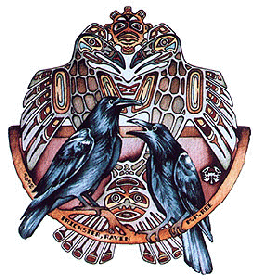


Professor Hempel says, "Aha, I've found a non-black object -- a purple cow. Therefore it (weakly) confirms the law "all non-black objects are not crows." So it must also confirm the equivalent law "all crows are black."
It's easy to find millions of non-black objects that are not crows, therefore strongly confirming the law.
The problem with Hempel's Paradox is finding the catch. Hempel's belief is that observing a non-black object actually does confirm the "all crows are black" law, but only to an infinitesimal degree. The reason the procedure seems strange, Hempel says, is that the class of objects on earth that are not crows is so enormously large compared to the number of crows that the degree to which a non-raven that is not black confirms the hypothesis is negligible.
And now, THE CATCH.
Opponents of Hempel like to point out that finding a purple cow is also, by the same reasoning, a confirming instance of the law "All crows are white."
Here's where the paradox comes in:
How can the same object -- a purple cow -- confirm "all crows are black" and "all crows are white" simultaneously?
Artwork: The Trickster by M. Roe Back to the Paradox Page